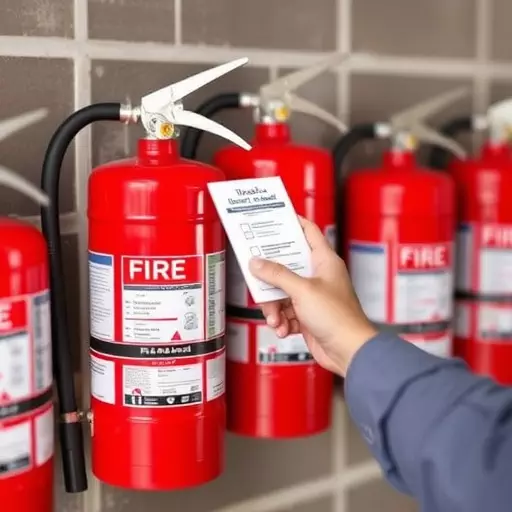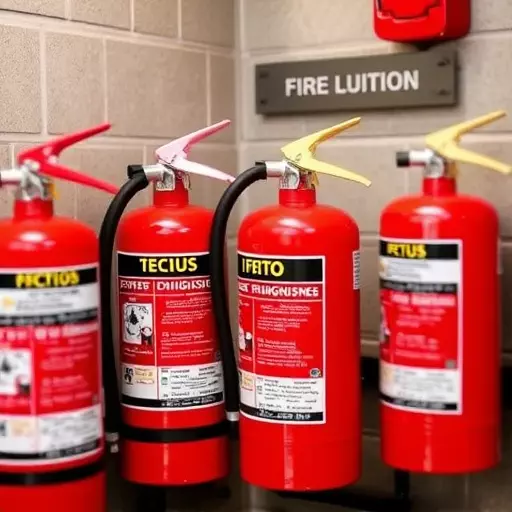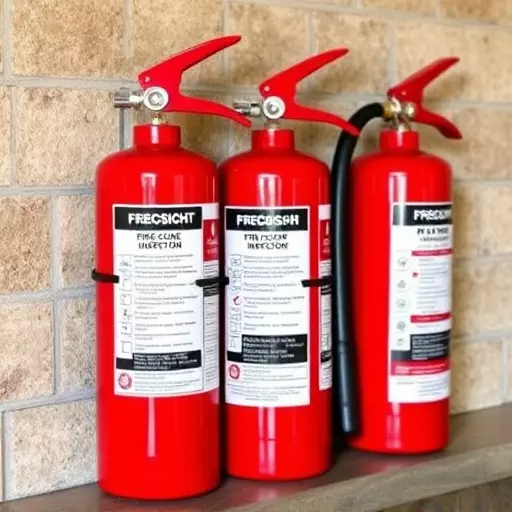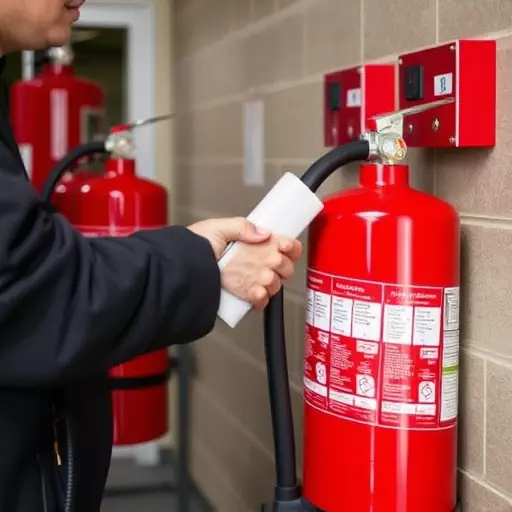Regular fire extinguisher condition assessments in Spring Lake facilities are essential for safety and legal compliance. Monthly inspections involve checking pressure gauges, preventing corrosion, verifying labeling, and ensuring smooth operation. Following manufacturer guidelines for maintenance guarantees reliable functionality. A detailed checklist should be used by trained professionals to verify integrity and accessibility, enhancing safety and compliance with fire codes. Regular monthly inspections and proper storage ensure extinguishers are ready for emergencies while mitigating liabilities.
In Spring Lake or any other location, regular fire extinguisher condition assessments are vital for ensuring safety and compliance. This article guides you through understanding the significance of these assessments, providing a comprehensive fire extinguisher inspection checklist. Learn about the key components to scrutinize during each checkup. We emphasize the importance of monthly fire extinguisher inspections and offer best practices for maintenance and storage, helping you stay prepared in case of emergencies. Implement these strategies for effective fire safety management in Spring Lake.
- Understanding Fire Extinguisher Condition Assessments
- Components to Include in a Fire Extinguisher Inspection Checklist
- Frequency of Monthly Fire Extinguisher Inspections
- Best Practices for Fire Extinguisher Maintenance and Storage in Spring Lake
Understanding Fire Extinguisher Condition Assessments

Understanding Fire Extinguisher Condition Assessments
Regular fire extinguisher condition assessments are vital for ensuring safety and compliance in any Spring Lake facility. These assessments go beyond simply checking if extinguishers are present; they involve thorough inspections of each unit to evaluate its operational readiness. A comprehensive fire extinguisher inspection checklist should be followed, covering key components such as pressure gauge readings, no-go areas for corrosion or damage, and proper labeling. Conducting these monthly fire extinguisher inspections is not just a legal requirement but also a proactive measure to prevent life-threatening situations.
During these assessments, it’s crucial to verify the integrity of the extinguisher’s seal, check for any signs of leakage or contamination, and ensure that the discharge lever operates smoothly. Additionally, inspecting the surrounding area for accessibility and clear exit routes aids in effective emergency response planning. Regular maintenance, including periodic testing and refilling as per manufacturer guidelines, is essential to guarantee that fire extinguishers perform optimally when needed most.
Components to Include in a Fire Extinguisher Inspection Checklist

When conducting a comprehensive fire extinguisher inspection in Spring Lake, several crucial components should be included in your checklist to ensure safety and compliance. Firstly, visually inspect the extinguisher for any signs of damage, corrosion, or leakage. Check the pressure gauge to confirm proper functioning and ensure the needle is within the green zone. Verify that all labels and markings are legible, indicating the type, class, and maintenance history.
Additionally, assess the accessibility and unobstructedness of the extinguisher. Ensure it is mounted securely and located in plain sight, easily accessible for emergency use. Check the date or expiration on the inspection label to verify when the last monthly fire extinguisher inspections were performed. Regular maintenance and timely retesting are vital to guarantee a functional device during an actual emergency.
Frequency of Monthly Fire Extinguisher Inspections

Regular monthly fire extinguisher inspections are a critical component of any comprehensive safety program for businesses and facilities in Spring Lake. These routine checks ensure that your fire extinguishers remain in optimal condition, ready to be deployed when needed. During each inspection, a trained professional should assess several key factors using a detailed fire extinguisher inspection checklist. This includes verifying the integrity of the extinguisher’s external casing, examining the pressure gauge (if applicable), checking for any signs of damage or corrosion, and confirming that the instructions and labels are clear and legible.
Additionally, monthly inspections provide an opportunity to inspect the accessibility and functionality of extinguishers, ensuring they are located in accordance with local fire codes and easily reachable in case of emergency. Regular maintenance and these thorough inspections can significantly contribute to a safer environment for your employees and patrons, as well as minimize potential liabilities associated with poorly maintained fire safety equipment.
Best Practices for Fire Extinguisher Maintenance and Storage in Spring Lake

In Spring Lake, maintaining fire extinguishers in optimal condition is paramount for public safety. Best practices dictate a combination of regular inspection and proper storage. Implement a comprehensive fire extinguisher inspection checklist to ensure every device is serviced monthly. This includes visually inspecting for signs of damage or corrosion, verifying pressure levels, and checking the expiration date on the extinguisher’s label. During inspections, ensure extinguishers are easily accessible, mounted securely, and located near clear exits as mandated by local fire codes.
For optimal storage, keep fire extinguishers in well-lit areas, away from extreme temperatures and direct sunlight. They should be secured to prevent accidental displacement or theft. A designated individual or team responsible for monthly inspections ensures that any issues are promptly addressed, enhancing the building’s fire safety measures. Regular upkeep and awareness of fire extinguisher inspection Spring Lake protocols can make a significant difference in emergency response preparedness.


